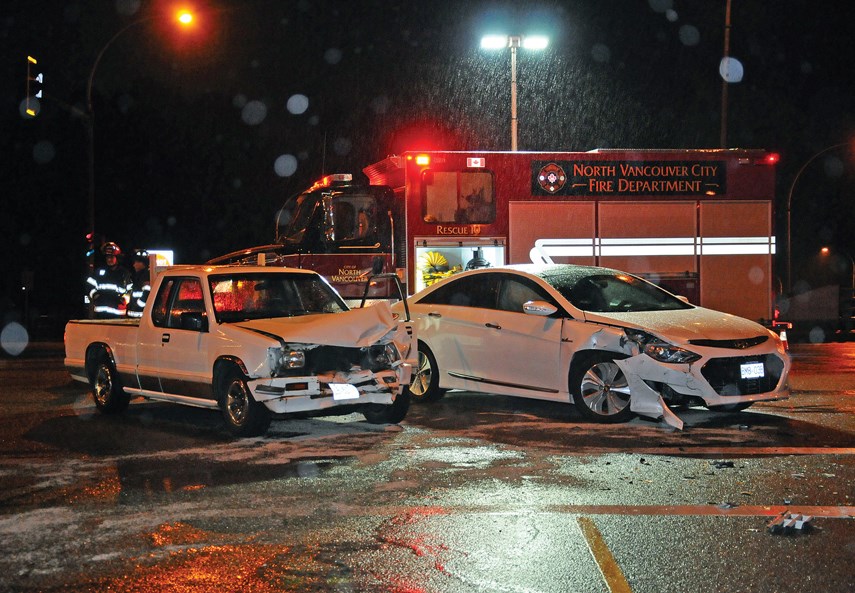Apparently North Shore politicians don’t like sitting in traffic gridlock either.
So District of North Vancouver councillors still plan to ask the province to change the way accidents are cleared from North Shore bridges, despite a lukewarm response to that idea at the Union of B.C. Municipalities conference this week.
District of North Vancouver Mayor Richard Walton said being stuck on the highway for three hours recently only bolstered his opinion that it’s a key issue for North Shore commuters.
“I spent three and a half hours in North Burnaby trying to get home,” said Walton, after three accidents snarled the Ironworkers Memorial Second Narrows Crossing Sept. 21. “I missed two appointments including a public one where I was supposed to open a building and everyone was waiting. It was very frustrating.”
Other district councillors are also stressing the need to clear bridge accidents faster.
“I’m going to personally take this up with the government,” said Coun. Jim Hanson, following a vote Thursday at the UBCM convention to send the issue back for further study. “I feel these are very reasonable measures.
“To require all minor accidents to be investigated by the RCMP … when the cut-off is vehicle damage of $1,000, that seems to me totally unrealistic.”
District councillors had hoped to win support from other municipalities in lobbying the province to change the way minor traffic accidents are handled, which often result in massive traffic bottlenecks when they occur on North Shore bridges.
Currently, any collision on a bridge resulting in more than $1,000 in damage means a police accident investigation and police approval to move the cars involved from a provincial highway.
But even minor fender benders will result in that kind of damage these days, argue councillors. They want the province to raise the dollar value at which police must be involved to $10,000 and allow road contractors to clear cars. They also want firefighters to be allowed to fill out accident forms in the case of minor collisions.
When it came time to debate the resolution, however, some smaller communities voiced concern that changes could put undue pressure on their volunteer firefighters or result in liability issues.
Walton said that wasn’t the district’s intent.
“We’re only concerned about (the speed of clearing accidents) in urban zones,” he said.
“The confusion seemed to be articulated by people who don’t live anywhere near a bridge.”
The debate on the issue came during a time when several recent accidents have caused gridlock on Highway 1 near the Ironworkers bridge.
On Tuesday morning last week, there was an eight-car pileup on the Lynn Creek bridge during rush hour after several drivers who were following too closely during heavy traffic got into a chain-reaction accident, sending one vehicle partially underneath another. Traffic was snarled for several hours.
Luckily nobody was injured although damage was substantial. “It’s eight vehicles. That’s never going to be cheap,” said Sgt. Len Lecker of the Deas Island traffic service, speaking for the RCMP’s Port Mann traffic division. “People have to maintain a safe following distance.”
Walton said accidents that cause huge backups result in further accidents.
In the recent multiple-accident gridlock he got caught in, “the (drivers of the) cars that got through were obviously very frustrated and by the time they got through the accident scene on the bridge they probably picked up speed and were going way faster than they normally would,” resulting in another accident, he said.
Walton said local MLAs are supportive of district efforts to get accidents cleared faster.
District of North Vancouver council will likely now discuss plans to take the issue up directly with the provincial government, said Walton.



